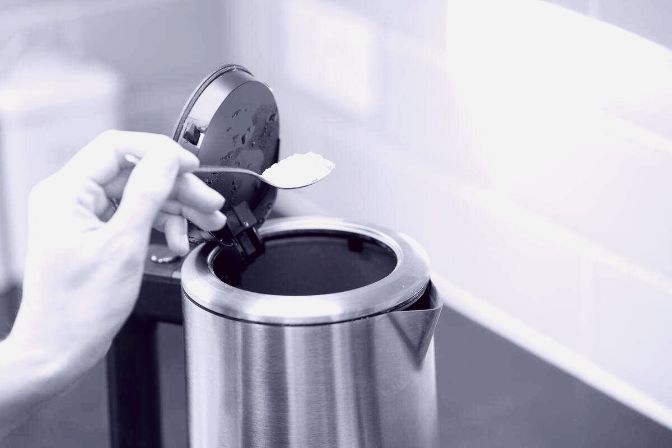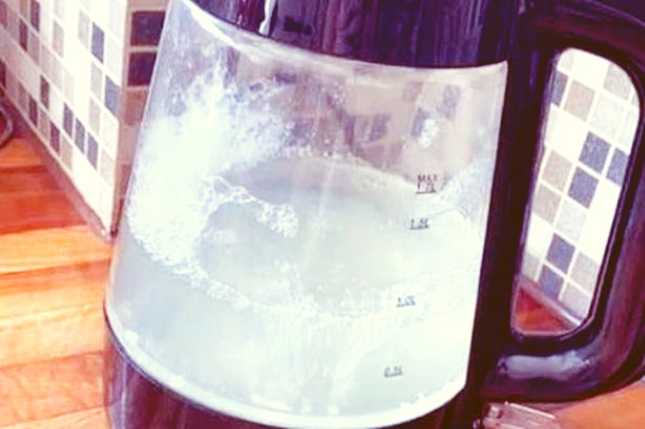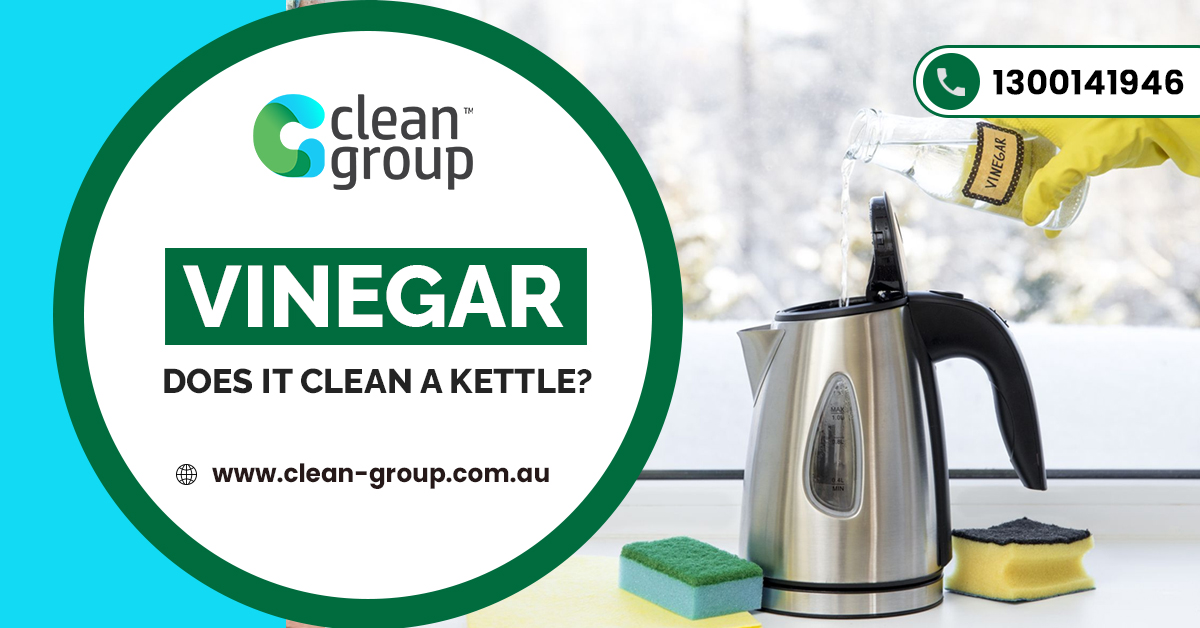It’s essential to clean your kettle every so often. This is because it can have limescale build-up inside. However, don’t be surprised if you haven’t completed this chore yet, because many people forget every year! Also, there are many ways to clean your kettle because there are now fancy kettle commercial cleaning solutions and some at-home solutions. Except, you do not need to buy anything other than vinegar to clean your kettle.
That’s right, there is a simple trick with vinegar that can leave your kettle sparkling, so your water comes out clean and healthy for you to drink.
Where Does Limescale Build-Up?
Limescale build-up happens over time as we continue to fill up our kettles from tap water. Yes, the minerals and contents found in tap water create limescale build-up inside your kettle.
However, this can be significantly reduced if you use filtered water instead of tap water, but most people just use tap water in their kettles.
One of the main reasons for kettle failure is limescale. This is because the element inside the kettle is constantly exposed to water, and when the limescale builds up, it ends up breaking the kettle.
However, modern kettles have changed their layout because they tend to have the element now hiding underneath a metal plate, so it’s harder for the limescale to ruin it.
Also, metal kettles can still have a coating of limescale on the inside and the base plate. When this happens, it is more likely that the limescale can dislodge itself from the inside – leading it to float in your water. That means when you make a cup of tea or coffee, those white bits in your drink are limescale from your kettle.
There are also plastic kettles. People believe that plastic kettles do not attract limescale because they’re not made of metal, but the base still is, so there is still limescale build-up found at the bottom of them as well.
Either way, no matter what kind of kettle you own, there is going to be limescale build-up, and it’s essential to remove it.
Lastly, some people think that the built-in filter is going to stop all the limescale pieces from being poured into your cup. However, it can only stop so much. If you leave the limescale to build, do not be surprised if your filter cannot contain all the pieces anymore.
It’s better just to clean your kettle on a schedule!
How Often Should I Clean My Kettle?
You should aim to clean your kettle every four to eight weeks. However, this number also depends on how much limescale is inside your kettle. Depending on the water you’re using will determine how often you need to clean your kettle.
Start with cleaning it every four weeks. Afterward, look inside your kettle every couple of weeks to see if you need to clean your kettle more often.
However, do not go overboard with the cleaning either because you do not want to drink water with boiled vinegar or a cleaning solution. Also, overcleaning can ruin your kettle.
Materials
These are the products you are going to need to clean your kettle:
- White vinegar
- Water
- Microfiber cloth
How to Descale Your Kettle

Instead of running out and buying kettle cleaners, grab some white vinegar and water because that is all you need to clean your kettle. You’re going to want to fill the kettle with a mixture of half-white vinegar and half water. Make sure that this mixture fills up three-quarters of the kettle. Then, boil the mixture inside.
After boiling, let the kettle and its contents completely cool before pouring it out. Have a look inside and see your now limescale-free kettle. Still, do not use it right away. You’re going to want to boil some water in your kettle and pour it out a couple of times. The reason for doing this is so then, you can get rid of any vinegar taste and smell left behind.
However, if you have a chemical-based product that helps you to descale your kettle, that can be used as well. Make sure to read the instructions first to know how to use it properly.
How to Clean the Outside of the Kettle
When your kettle is completely cooled, you can clean it with a sponge or cloth with some hot soapy water. Remember, do not submerge your kettle in water because then, it is going to break. Instead, wipe the outside with a sponge or cloth and dry it right away.
If you want to make your kettle sparkle, mix half water and half white vinegar. Put it in a spray bottle and add a couple of sprays to the outside of your kettle. Use a microfibre cloth to buff your kettle.
Stubborn watermarks can be found on the outside of kettles as well. If you have some, soak a cloth with white vinegar and water. Take your cloth and wipe at the affected areas. Leave the mixture to work for a couple of minutes before wiping away with a dry cloth.
However, if your kettle is stainless steel or enamel, mix bicarbonate soda and white vinegar to make a paste. Apply this paste to the affected area with a cloth and gently scrub away.
How to Prevent Limescale

A trick to help prevent limescale is to purchase a specific limescale stainless-steel wire ball. This can be found online or at a home hardware store. Place the ball in the kettle and let it get to work. It will attract any limescale deposits away from the base and sides.
Top tip: Rinse and squeeze this ball every month to keep it clear from building up limescale itself.
Conclusion
Kettles are used daily and should be looked after. No matter what kind of water you place in your kettle, there is always going to be limescale build-up. However, if you clean your kettle with white vinegar every four to eight weeks, you are going to see a significant difference inside your kettle.
It’s an easy task that can be completed during your cleaning schedule, so add it in and enjoy cleaner cups of tea and coffee.

